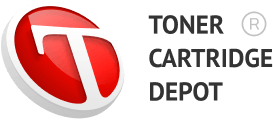
Ever feel like you’re just drowning in printing costs? Like every page you print costs a fortune. It’s amazing how much it adds up, right? Today we’re doing a deep dive into the world of toner cartridges, specifically HP, Lexmark, and Xerox, to help you make the best decisions for high-volume printing.
Most people just grab the cheapest cartridge on the shelf. But there’s actually a lot more to it than just the price tag. Print yield is basically how many pages you can squeeze out of a single cartridge before you have to replace it. Think of it like the stamina of a cartridge—some are marathon runners, some are sprinters. So you’ve got your long-lasting ones, and then you’ve got your ones that don’t last as long.
Cost per page factors in the cartridge price and its yield to tell you how much each printed page is actually costing you. So it’s not just about the initial cost—it’s about the long-term cost. A high-yield cartridge might be more expensive up front, but it could actually be cheaper in the long run, especially if you’re printing a lot. And that’s where understanding the strengths of each brand comes in.
Let’s start with HP, a brand we all know. They’re known for reliability, which is crucial when you’re up against a deadline and can’t afford for your printer to quit. HP developed Jet Intelligence Technology, which is just a fancy way of saying they’ve found ways to get the most out of their toner. It optimizes toner use and can speed up printing too. Faster printing and more pages from a single cartridge? That’s a big win for businesses that rely heavily on printing.
HP cartridges also have smart chips embedded in them—like little fuel gauges that let you know in advance when you’re running low on toner. So no more last-minute panics or frantic toner runs. You can plan ahead and avoid those stressful situations. HP also offers high-capacity cartridges that can print up to 18,000 pages, which is huge. That’s more than enough to print a copy of War and Peace for every person in a small town.
Now, let’s talk about Lexmark. While it might not be as well known as HP, Lexmark is a powerhouse when it comes to print quality. If you’re printing high-stakes presentations or marketing materials, Lexmark might be the way to go. They’ve got something called Unison Toner, which gives you incredibly sharp text and vibrant graphics—no more blurry images or faded text. Lexmark also excels at high-yield cartridges, some of which can print up to 25,000 pages.
And then there’s Xerox. They’ve been a major player for decades and are known for their durability and consistent performance, especially in high-volume environments. Another thing that sets Xerox apart is their commitment to sustainability. They have a robust cartridge recycling program, emphasizing closed-loop recycling, which means they use as much recycled material as possible in their new cartridges. It’s a great way to reduce waste.
Now, let’s address OEM vs. compatible cartridges. OEM cartridges are made by the same company that made your printer. They’re designed to work perfectly with your printer model and often come with a warranty. Compatible cartridges, on the other hand, are made by third-party companies and are often significantly cheaper. However, there’s always a risk they won’t work as well, or they could even damage your printer. So, it’s a bit of a gamble, but it depends on your priorities—print quality vs. cost savings.
We’ve talked about brand pros and cons, but what about the environmental impact? HP, Lexmark, and Xerox are all making efforts to be more sustainable. They encourage recycling old cartridges, and some companies even offer discounts or rewards for returning used ones. It’s about creating a circular system—using something, recycling it, and then using it again. This not only reduces waste but also cuts down on the need to extract new resources.
So, whether you’re comparing print yield, cost per page, or the emotional impact of your printed materials, it’s all about figuring out what’s most important to you. Every document you print tells a story—whether it’s meeting notes or family photos—and the quality of that print can make a big difference in how it’s received. Even in a digital world, those physical prints still matter.
We’ve covered a lot today, from the technical aspects of cartridges to the emotional side of printing. Hopefully, you’ll be able to make more informed decisions the next time you’re standing in the store, trying to choose between toner cartridges. Happy printing!
